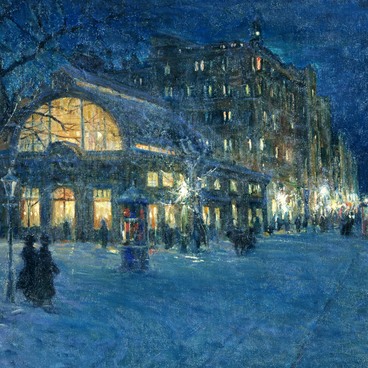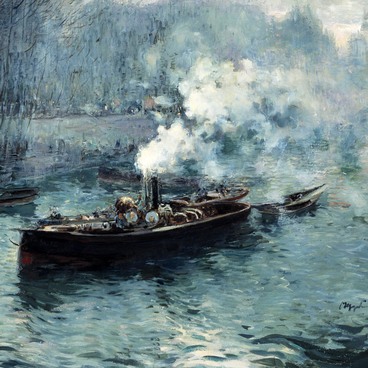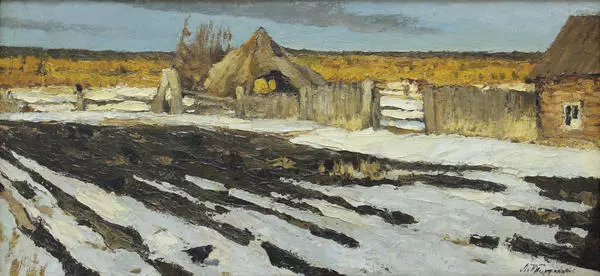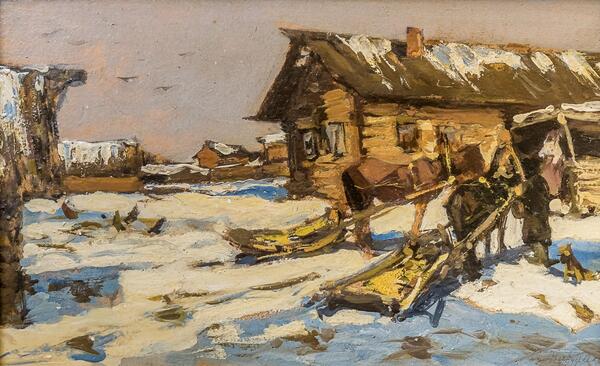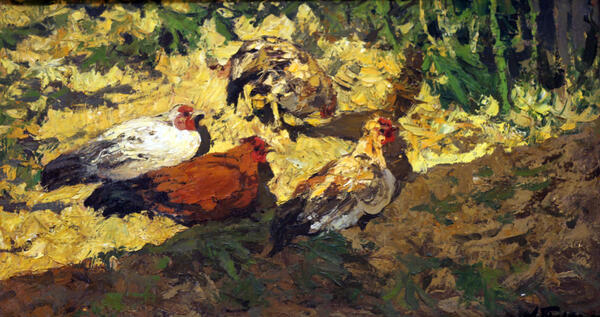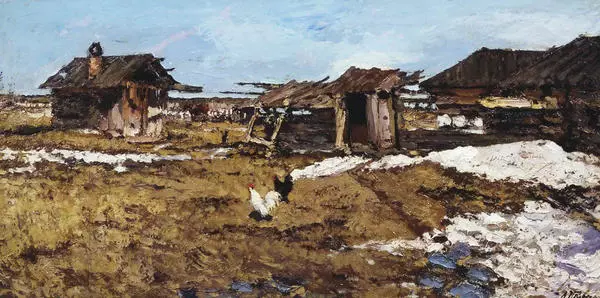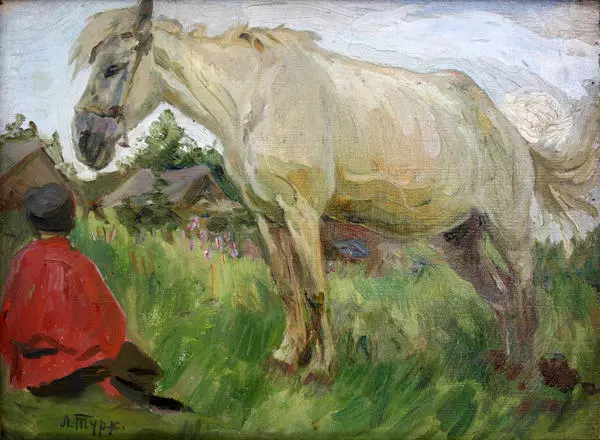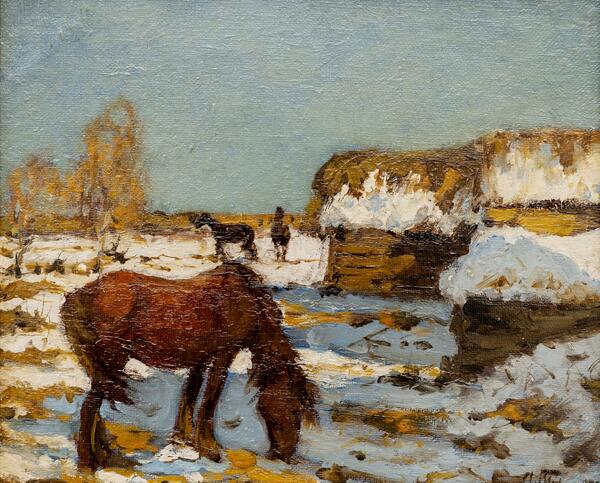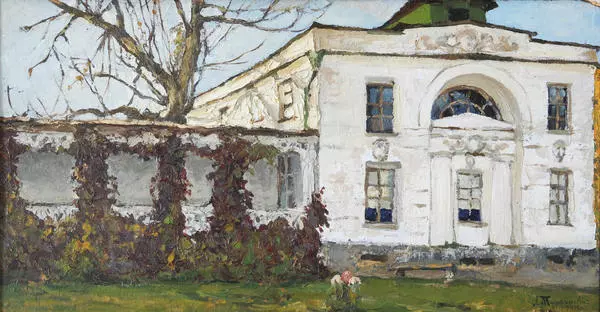Russian impressionist painter Leonard Turzhansky was born in Ekaterinburg in 1875. From a very young age, he received private tuition in painting, and that gave him the impetus towards dedicating his life to art. Young Turzhansky mastered painting both in Moscow and Saint Petersburg, however, it was his studies at the Moscow School of Painting, Sculpture and Architecture in 1898-1909 that played a decisive role in his formation as an artist. Among his professors were Valentin Serov, the great portraitist, and Konstantin Korovin, one of the first Russian impressionists.
At first, Turzhansky painted icons to order, but then dedicated himself entirely to landscape painting. His works are abundant in domesticated animals, like flocks of horses or herds of cows. To paint them, the artist usually used intensive concentrated colors: greenish yellow, dark green, or reddish brown. The artist’s focus on folk themes quickly caught the eye of the Itinerants, and they invited him to partake in exhibitions. In 1912, he became a member of the Union of Russian Artists.
Esthetically, Turzhansky had close bonds with Russian realis art of the early 19th century, but he quickly took to impressionism and adopted progressive techniques that are so native to impressionist painting. These are very legible in the this touchingly homey landscape of 1913 titled “In the Sun”. The artist used general thick strokes to make the juicy palette and the dominating greenish brown color scheme stand out.
In this painting, Turzhansky shows the commonness of everyday rural life, there are some farm horses feeding on unremarkable pasture. The composition is longitudinal, and the horizon looks chopped off by the top edge of the painting, the technique used to make the forefront of the picture closer to the viewer. The name of the painting, “In the Sun”, highlights the significance of the genre component: above all, it relays the blissful quiet happiness of a new morning.
Even that Turzhansky lived in Moscow since the outbreak of the 20th century and painted many wonderful landscapes in Moscow, every year he revisited his dear homeland near Ekaterinburg, and it frequently offered itself as an inspiration for his paintings. The painter died in 1945 at the age of 70.
At first, Turzhansky painted icons to order, but then dedicated himself entirely to landscape painting. His works are abundant in domesticated animals, like flocks of horses or herds of cows. To paint them, the artist usually used intensive concentrated colors: greenish yellow, dark green, or reddish brown. The artist’s focus on folk themes quickly caught the eye of the Itinerants, and they invited him to partake in exhibitions. In 1912, he became a member of the Union of Russian Artists.
Esthetically, Turzhansky had close bonds with Russian realis art of the early 19th century, but he quickly took to impressionism and adopted progressive techniques that are so native to impressionist painting. These are very legible in the this touchingly homey landscape of 1913 titled “In the Sun”. The artist used general thick strokes to make the juicy palette and the dominating greenish brown color scheme stand out.
In this painting, Turzhansky shows the commonness of everyday rural life, there are some farm horses feeding on unremarkable pasture. The composition is longitudinal, and the horizon looks chopped off by the top edge of the painting, the technique used to make the forefront of the picture closer to the viewer. The name of the painting, “In the Sun”, highlights the significance of the genre component: above all, it relays the blissful quiet happiness of a new morning.
Even that Turzhansky lived in Moscow since the outbreak of the 20th century and painted many wonderful landscapes in Moscow, every year he revisited his dear homeland near Ekaterinburg, and it frequently offered itself as an inspiration for his paintings. The painter died in 1945 at the age of 70.
